Abstract
Background
Office hysteroscopy is an affordable and popular approach in gynecology, offering high quality and inexpensive care. It has been made possible by miniaturization of instruments along with a range of technical variations and innovations which have made the procedure tolerable in outpatient care units. Pain is still a problem and has not to date been adequately managed.
Objectives
Our main objective is to compare two centers where hysteroscopy is performed without general anesthesia or sedation in an office setting. In Lisbon a novel local anesthetic technique has been introduced when patients complained of pain. These centres have slightly different protocols namely in assessing pain and evaluating score results.
Materials and methods
This was a prospective observation multicenter study, comparing pain in office hysteroscopy with three groups: mini-hysteroscopy (3 mm scope), conventional (5 mm) hysteroscopy without anesthesia and (5 mm) hysteroscopy with “hysteroscopic anesthesia”.
Data collection and analysis
We analyzed data from two centers involving one hundred and eighty one participants who completed the intervention. Pain was evaluated using a 10 cm visual analogue scale and a numeric rating scale. Analysis included the Kruskal-Wallis and Mann-Whitney Tests for the three groups and the Wilcoxon Signed Ranks Test for comparing repeated measurements. Results were discussed at 5% significance level.
Main results
Analysis revealed a significant reduction pain score (p value <0.001) in the group where “hysteroscopic anesthesia” was used.
Conclusions
Pain scores in office hysteroscopy can be lowered with “hysteroscopic anesthesia”.
Keywords
hysteroscopy, pain, hysteroscopic anesthesia
Introduction
Hysteroscopy allows direct visualization of unsuspected pathology, histological sampling, cancer staging and surgery. Office hysteroscopy (OH) is a high quality approach in gynecology.
Reduction in pain has led to performing examination and operations without anesthesia [1,2] and is associated to very low cost of gynecological care and justifies its generalized use[3]. Pain perception may vary among population subgroups[4,5].
The vaginoscopic no-touch approach [3,6-9] improved tolerance as data in a 2010 systematic review by Cooperet al.[9] demonstrated. Use of mini-hysteroscopes avoid cervical dilation and previous ripening with misoprostol facilitates operations[1,10]. Both rigid and flexible mini-histeroscopes reduce pain and may be adequate for examination [11] but rigid scopes seem to have superior optical properties[12].
CO2 and normal saline are adequate for diagnostic outpatient hysteroscopy [13] as Cooper’s 2010 systematic review on effect on pain concluded, but saline is more convenient if surgery is to be done[14].
Various interventions[15,16], medications[17,18], para-cervical block cocktails and conscious sedation have been suggested to control pain with mixed results[10,19-23]. Two systematic review in 2010, one by Ahmadet al.[24] and another by Cooper et al.[21] have however suggested a reduction of pain with local anesthetic, but “clinical significance of results is limited as the reduction in mean pain score is small”[24].
Vinagreet al.[25] describes a new endoscopic local anesthetic technique using 35 cm long Cook®Williams Cystoscopy Injection Needle (“hysteroscopic anesthesia”).
Objectives
Our main objectives are: to determine if difference in scope diameters and if the use of a novel technic of local anesthesia shows statistical difference in pain scores during office hysteroscopy.
Materials and methods
From February to September 2015 one hundred and eighteen patients scheduled for OH at Centro HospitalarTondela-Viseu, Portugal and eighty one from Hospital das Forças Armadas – Polo de Lisboa, Portugal were enrolled in this prospective observational study. Of theses one hundred and four from Viseu and eighty one from Lisbon accepted to participate. Four cases from Viseu had incomplete data and were excluded. A total of one hundred and eighty one cases were included and analyzed (Figure 1). The study was approved by the Institutional Review Boards and conducted in compliance with the protocol, the Declaration of Helsinki, the Good Epidemiological Practice, and all applicable laws and regulations.
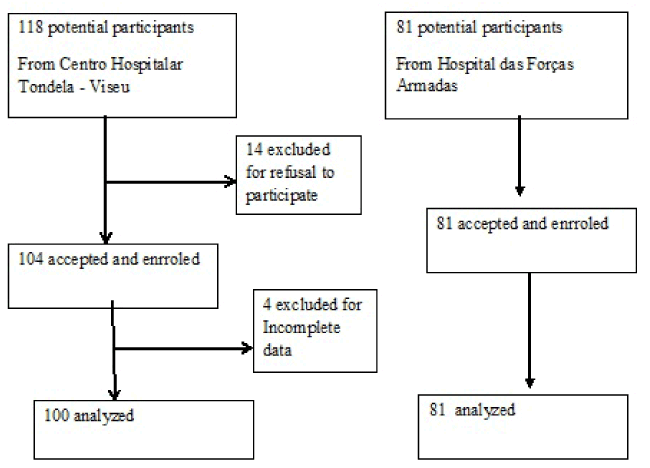
Figure 1. Flow diagram of selection of women.
Hysteroscopy was performed using the vaginal no touch approach with a 3.5mm outer sheet device (2.9mm optics either from FiegertEndotech®Tuttlingen, Germany or Karl Storz Hopkins®Tuttlingen, Germany) with a fore oblique 30º mini-hysteroscopy at Centro HospitalarTondela-Viseu and a 5 mm outer sheet device at Hospital das Forças Armadas Lisbon. An Ackermann® xenon light source with a constant flow Richard Wolf®hystero pump was used in Viseu and Endoflow® by Socomed in Lisbon; saline at eighty to one hundred mm of mercury was standard in procedures.
Protocol was slightly different in each institution: no anesthesia was provided in Viseu and in Lisbon, when women complained, a new endoscopic local anesthetic technique by means of 35 cm Cystoscopy Injection Needle named by Vinagreet al.[25] “hysteroscopic anesthesia” was used.
This technique is a modification of Skensved’s “Hysteroscopically Guided Intramyometrial Local Anesthesia – The Focal Local”[26].
While performing vaginoscopy the surgeon assessed patient’s tolerance. If pain made the procedure uncomfortable, 1% lidocaine was injected directly through the endoscope in the endo-cervical region at the site where the women felt pain with the cystoscopic needle in small amounts (commonly near the internal os). Further along the hysteroscopy, if discomfort arose from distension of the uterus, the operator would retrieve the instrument into the vagina and the uterosacral ligaments were also injected with lidocaine. In case of see-and-treat septoplasty, polypectomy or myomectomy anesthetic was injected at the base of the mass to be excised, allowing for pain control during operation. Total amount of anesthetic used was about five centiliters and did not in any case exceed 10 cc for safety reasons.
Pain scoring was evaluated using a 10 cm Visual Analogue Scale (VAS) in Viseu and a ten points Numeric Rating Scale (NRS) in Lisbon.
Three groups were so compared: 3.5 mm mini-hysteroscopy, 5 mm hysteroscopy without anesthesia and 5 mm hysteroscopy with anesthesia. Patient’s mean age tends to be higher in Lisbon’s 5 mm series and even higher in the 5 mm group with anesthesia. Other variables don´t seem significantly different between groups (Table 1).
| |
3.5 mm
|
(range)
|
5 mm
|
(range)
|
5 mm & anesthesia
|
(range)
|
|
n
|
100
|
|
52
|
|
29
|
|
|
Menopause
|
45
|
|
19
|
|
6
|
|
|
Age
|
54
|
(28-84)
|
61
|
(20-85)
|
67
|
(30-81)
|
|
BMI
|
26,2
|
(19.1-39.5)
|
26,6
|
(19.1-39.9)
|
27,6
|
(21.6-46.1)
|
|
Weight
|
65,50
|
(46-103)
|
68,00
|
(43-102)
|
66,00
|
(50-118)
|
Table 1. Patient characteristics.
Statistical analysis was performed with SPSS 22.0 IBM for windows and in a statistical hypothesis test with a p value <0.05 the effect was considered significant so results are reported with 95% confidence level.
Results
We performed a Kruskal-Wallis test with the three groups and results showed there was at least one group of the three analyzed where pain score was significantly different. A plot comparing pain score in the groups can been seen in Figure 2. There seems to be a trend for higher pain score with menopausal state (Figure 3). As to other variables women’s body mass index and weight was similar between the three groups (Figure 4) but mean age is higher and statistically significant in the anesthesia group (group of women who reported more pain and where lidocaine was administered).
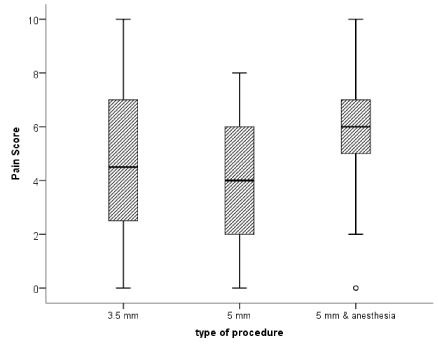
Figure 2. Pain score and type of procedure.
Comparing groups two by two, the difference between pain score was demonstrated between 5 mm hysteroscopy and 5mm hysteroscopy with anesthesia groups. The Mann-Whitney test with Bonferroni correction (Table 2) showed significant differences between the three groups (p value=0.012). Comparing repeated measurements using the Wilcoxon Signed Ranks Test (5 mm group before anesthesia and 5 mm group after anesthesia) showed a significant reduction in pain as seen in Table 4 (p valeu <0.001).
|
|
|
|
3.5mm vs 5mm
|
p= 0.168
|
|
3.5mm vs 5mm with anesthesia
|
p= 0.291
|
|
5mm vs 5mm with anesthesia
|
p= 0.012
|
Table 2. Hysteroscopy and pain score.
* Mann-Whitney U test with Bonferroni correction
Discussion
Our data found a trend for lower pain reporting with 3.5 mm versus 5 mm scopes (Table 3) as would be expected in line with a recent meta-analysis and review [27].
|
N
|
Valid
|
100
|
81
|
|
|
Missing
|
0
|
0
|
|
|
Median
|
4,50
|
5,00
|
|
Percentiles
|
25
|
2,25
|
2,50
|
|
|
50
|
4,50
|
5,00
|
|
|
75
|
7,00
|
6,00
|
Table 3. Mean pain score and quartiles for 3.5 mm and 5 mm hysteroscopy
Pain Score Statisticsab
† a. type of procedure = 3.5 mm ‡ b.= 5 mm
|
Test Statisticsa
|
Pain score post anesthesia - Pain Score
|
|
Z
|
-3,178b
|
|
Asymp. Sig. (2-tailed)
|
,001
|
Table 4. Before and after hysteroscopic anesthesia.
a. Wilcoxon signed ranks test
b. Based on positive ranks
|
Test Statisticsa
|
Pain score post anesthesia - Pain Score
|
|
Z
|
2021 Copyright OAT. All rights reserv
-3,178b
|
|
Asymp. Sig. (2-tailed)
|
,001
|
Table 4. Before and after hysteroscopic anesthesia.
a. Wilcoxon signed ranks test
b. Based on positive ranks
The study also suggests hysteroscopy with 5 mm scopes and “hysteroscopic anesthesia” is less painful than hysteroscopy without anesthesia in an office setting. As seen, mean pain scores before anesthesia including all 5 mm hysteroscopies are higher in the group which was subsequently treated with anesthesia (NRS around six) as compared to patients where no anesthesia was used (NRS around four) (Figure 5). The sub-group where anesthesia was used tends to be older (Figure 4) so, most likely the higher pain report is related to menopausal tissue atrophy. Significantly this group of women showed a dramatic decrease in discomfort after lidocaine(Figure 6).
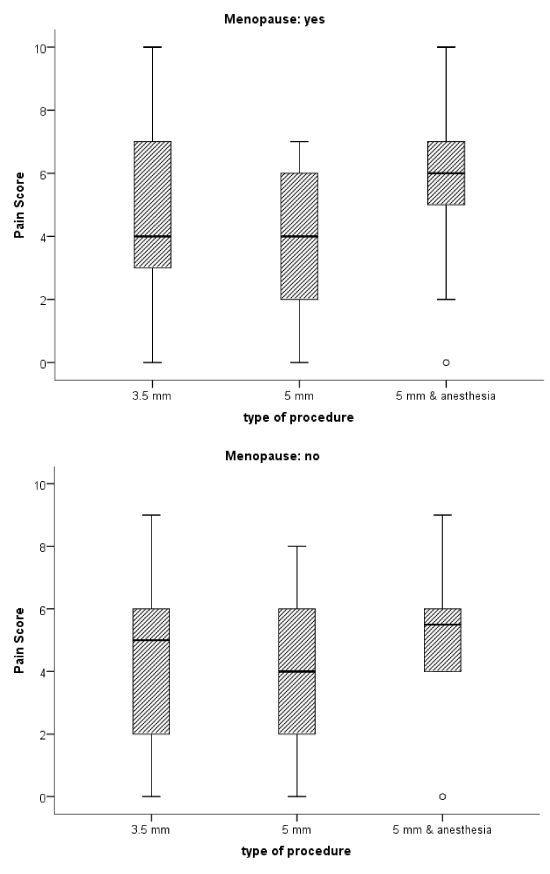
Figure 3. Menopause and pain.
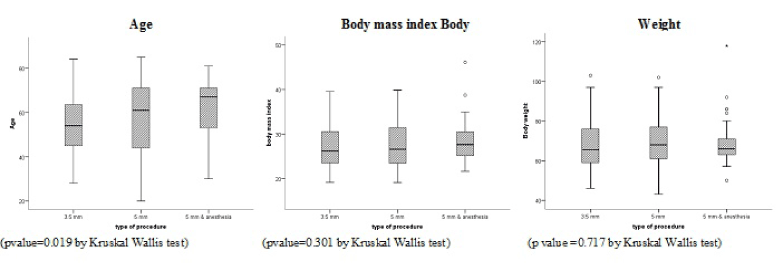
Figure 4. Comparison of age, body mass index and weight between the three groups.
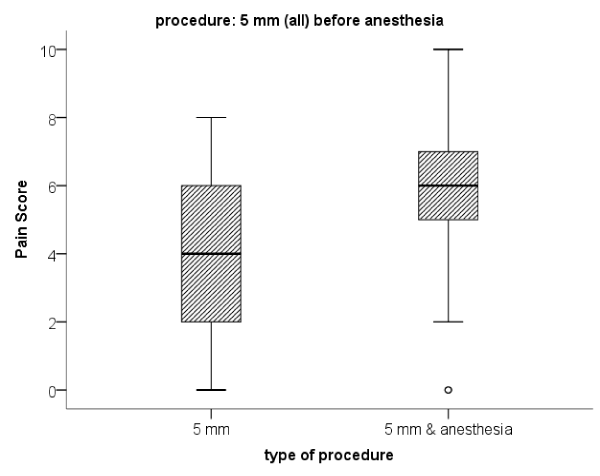
Figure 5. Pain before anesthesia.

Figure 6. Hysteroscopy (5 mm scope) with and without anesthesia.
Introducing “hysteroscopic anesthesia” to women in outpatient OH units offers relief from distress, having a statistically significant effect on pain score. This result seems even more noteworthy as both 5 mm hysteroscopy groups came from the same institution, was seen by the same personnel and protocol pain assessment used the same tool, namely NRS.
This anesthesia technique is inexpensive (1% lidocaine without epinephrine), easy to learn and acts quickly, providing pain relief and comfort to gynecological outpatients. The 35 cm long Cystoscopy Injection Needle is marketed and easily acquirable; pricing in Portugal is around twenty euros per unit.
Main findings
“Hysteroscopic anesthesia” is very effective in lowering pain at hysteroscopy. It is also cheap, simple, very useful for improving tolerance in outpatient hysteroscopy examinations and surgery.
Strengths and limitations
Results showed pain in hysteroscopy can be controlled with this innovative local anesthesia technique. Authors believe that evidence is convincing, accurate, reproducible and can be extrapolated to general population.
Nevertheless authors suggest well-designed randomized controlled trials will most certainly give better evidence of efficacy of this novel technical improvement in hysteroscopy.
Interpretation (findings in light of other evidence)
Pain scores can be reduced by “hysteroscopic anesthesia” and make this procedure tolerable for outpatients.
Conclusions
From evidence gathered we must conclude that “hysteroscopic anesthesia” is very promising both for diagnostic and see and treat approach in outpatients'office hysteroscopy.
It may be especially important in older women who were more likely to complain of discomfort.
The authors have no conflict of interest with any institution private or public.
No funding and no ethical approval was considered necessary.
This work was however supported by Portuguese iBiMED - Institute for Biomedicine and the Portuguese Foundation for Science and Technology (FCT-Fundacaopara a Ciencia e a Tecnologia) within projects: UID/BIM/04501/2013
References
- Guida M, Di SpiezioSardo A, Acunzo G, Sparice S, Bramante S, et al. (2006) Vaginoscopic versus traditional office hysteroscopy: a randomized controlled study. Hum Reprod 21: 3253-3257. [Crossref]
- Siristatidis C, Chrelias C (2011) Feasibility of office hysteroscopy through the "see and treat technique" in private practice: a prospective observational study. Arch Gynecol Obstet 283: 819-823. [Crossref]
- Siristatidis C, Chrelias C, Salamalekis G, Kassanos D (2010) Office hysteroscopy: current trends and potential applications: a critical review. Arch Gynecol Obstet 282: 383-388. [Crossref]
- de Carvalho Schettini JA, Ramos de Amorim MM, Ribeiro Costa AA, Albuquerque Neto LC (2007) Pain evaluation in outpatients undergoing diagnostic anesthesia-free hysteroscopy in a teaching hospital: a cohort study. J Minim Invasive Gynecol 14: 729-735. [Crossref]
- Cicinelli E, Rossi AC, Marinaccio M, Matteo M, Saliani N, et al. (2007) Predictive factors for pain experienced at office fluid minihysteroscopy. J Minim Invasive Gynecol 14: 485-488. [Crossref]
- Sagiv R, Sadan O, Boaz M, Dishi M, Schechter E, et al. (2006) A new approach to office hysteroscopy compared with traditional hysteroscopy: a randomized controlled trial. Obstet Gynecol 108: 387-392. [Crossref]
- Diniz DB, DepesDde B, Pereira AM, David SD, Lippi UG, et al. (2010) [Pain evaluation in office hysteroscopy: comparison of two techniques]. Rev Bras Ginecol Obstet 32: 26-32. [Crossref]
- Ekin MY, Yasar L, Akgöl S (2009) Comparison of Vaginoscopic No Touch Method with The Traditional Method of Outpatient Hysteroscopy. Medical Journal of Bak›rköy 5: 4.
- Cooper NA, Smith P, Khan KS, Clark TJ (2010) Vaginoscopic approach to outpatient hysteroscopy: a systematic review of the effect on pain. BJOG 117:532-539. [Crossref]
- De Angelis C, Santoro G, Re ME, Nofroni I (2003) Office hysteroscopy and compliance: mini-hysteroscopy versus traditional hysteroscopy in a randomized trial. Hum Reprod 18: 2441-2445. [Crossref]
- Baxter AJ, Beck B, Phillips K (2002) A randomized prospective trial of rigid and flexible hysteroscopy in an outpatient setting. Gynaecological Endoscopy 11: 357-364.
- Unfried G, Wieser F, Albrecht A, Kaider A, Nagele F (2001) Flexible versus rigid endoscopes for outpatient hysteroscopy: a prospective randomized clinical trial. Hum Reprod 16: 168-171. [Crossref]
- Raimondo G, Raimondo D, D'Aniello G, Russo C, Ronga A, et al. (2010) A randomized controlled study comparing carbon dioxide versus normal saline as distension media in diagnostic office hysteroscopy: is the distension with carbon dioxide a problem? Fertil Steril 94: 2319-2322. [Crossref]
- Cooper NA, Smith P, Khan KS, Clark TJ (2011) A systematic review of the effect of the distension medium on pain during outpatient hysteroscopy. Fertil Steril 95: 264-271. [Crossref]
- De Angelis C, Perrone G, Santoro G, Nofroni I, Zichella L (2003) Suppression of pelvic pain during hysteroscopy with a transcutaneous electrical nerve stimulation device. Fertil Steril 79: 1422-1427. [Crossref]
- Angioli R, De CiccoNardone C, Plotti F, Cafà EV, Dugo N, et al. (2014) Use of music to reduce anxiety during office hysteroscopy: prospective randomized trial. J Minim Invasive Gynecol 21: 454-459. [Crossref]
- Floris S, Piras B, Orrù M, Silvetti E, Tusconi A, et al. (2007) Efficacy of intravenous tramadol treatment for reducing pain during office diagnostic hysteroscopy. Fertil Steril 87: 147-151. [Crossref]
- Lin YH, Hwang JL, Huang LW, Chen HJ (2005) Use of sublingual buprenorphine for pain relief in office hysteroscopy. J Minim Invasive Gynecol 12: 347-350. [Crossref]
- Campo R, Molinas CR, Rombauts L, Mestdagh G, Lauwers M, et al. (2005) Prospective multicentre randomized controlled trial to evaluate factors influencing the success rate of office diagnostic hysteroscopy. Hum Reprod 20: 258-263. [Crossref]
- Cooper NA, Smith P, Khan KS, Clark TJ (2011) Does cervical preparation before outpatient hysteroscopy reduce women's pain experience? A systematic review. BJOG 118: 1292-1301. [Crossref]
- Cooper NA, Khan KS, Clark TJ (2010) Local anaesthesia for pain control during outpatient hysteroscopy: systematic review and meta-analysis. BMJ 340: c1130.
- Kabli N, Tulandi T (2008) A randomized trial of outpatient hysteroscopy with and without intrauterine anesthesia. J Minim Invasive Gynecol 15: 308-310. [Crossref]
- Soriano D, Ajaj S, Chuong T, Deval B, Fauconnier A, et al. (2000) Lidocaine spray and outpatient hysteroscopy: randomized placebo-controlled trial. Obstet Gynecol 96: 661-664. [Crossref]
- Ahmad G, O'Flynn H, Attarbashi S, Duffy JM, Watson A (2010) Pain relief for outpatient hysteroscopy. Cochrane Database Syst Rev CD007710. [Crossref]
- Vinagre C, Mairos J, Di Martino, P (2013) Hysteroscopic anesthesia: a new method of anesthesia in ambulatory hysteroscopy. Acta Obstet Ginecol Port 7: 3.
- Skensved H (2013) Hysteroscopically Guided Intramyometrial Local Anaesthesia – The Focal Local – for Resection of Endometrial Polyps by VaginoscopicMicrohysteroscopy in Postmenopausal Women. Journal of Minimally Invasive Gynecology 20: 1.
- Paulo AA, Solheiro MH, Paulo CO (2015) Is pain better tolerated with mini-hysteroscopy than with conventional device? A systematic review and meta-analysis : Hysteroscopy scope size and pain. Arch Gynecol Obstet 292: 987-994. [Crossref]





